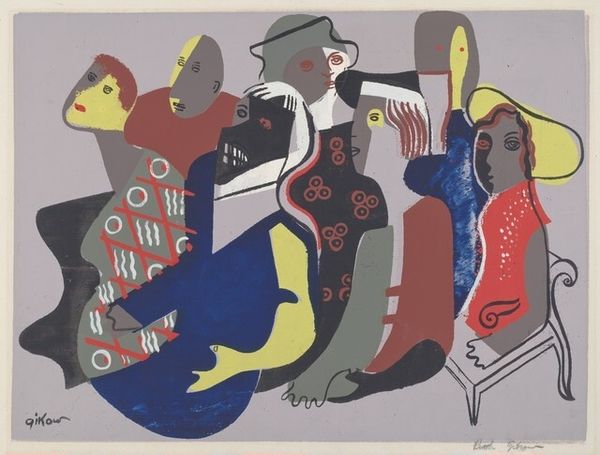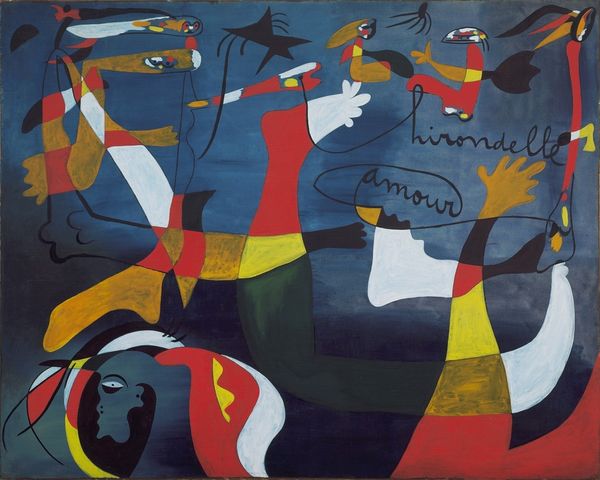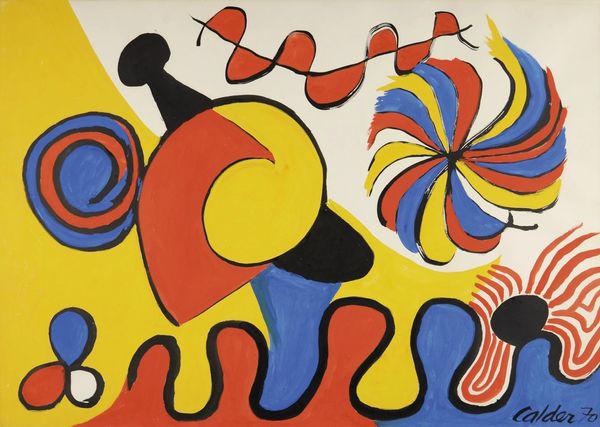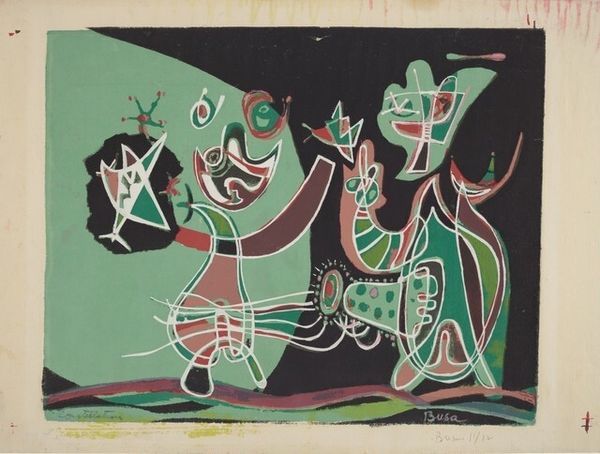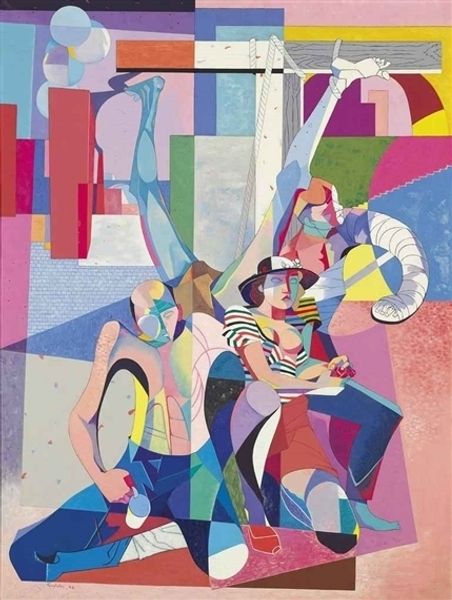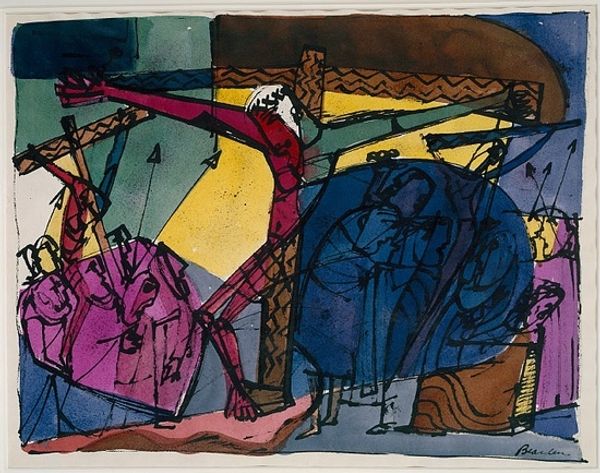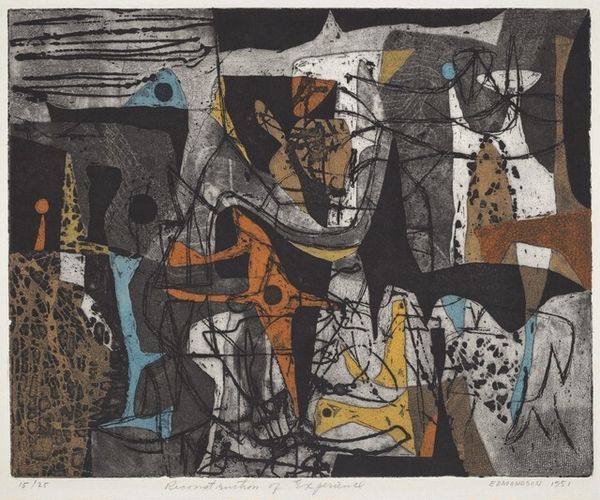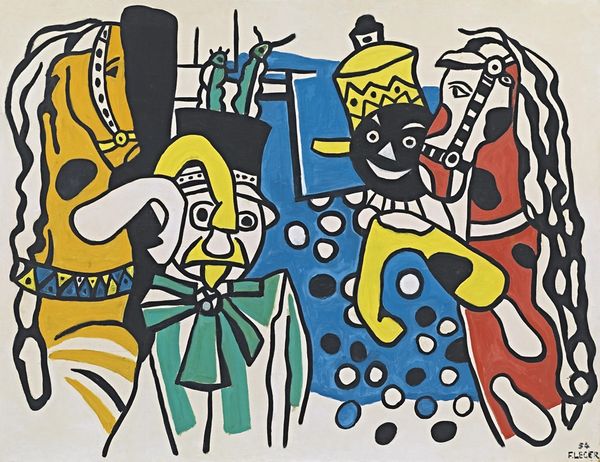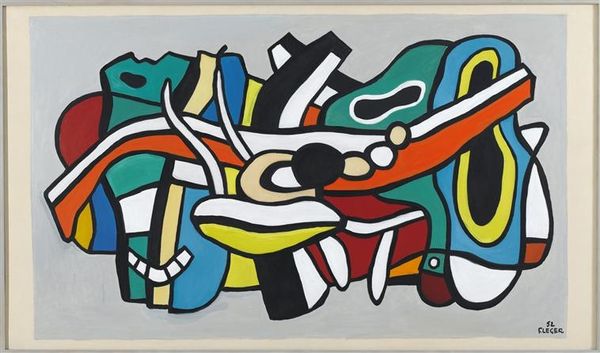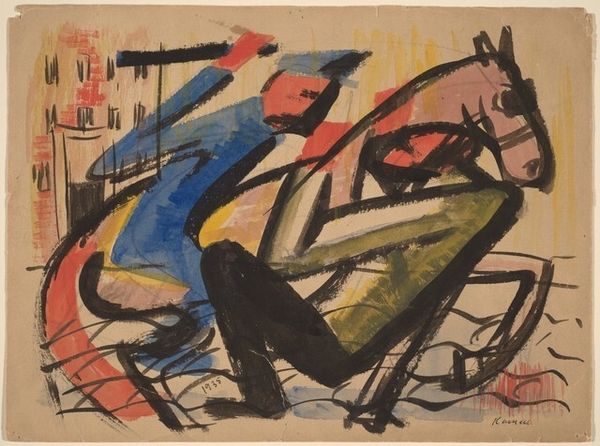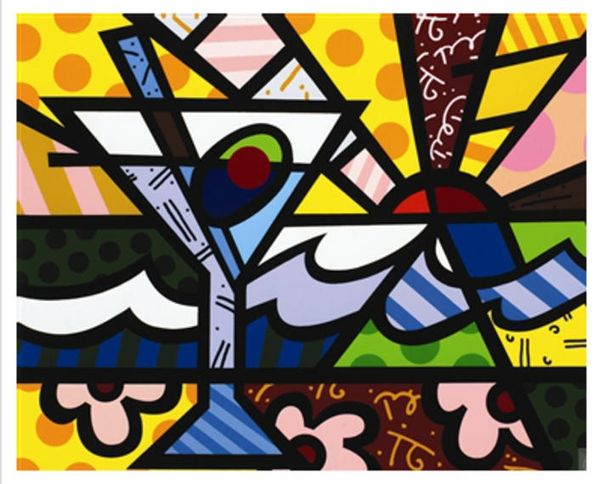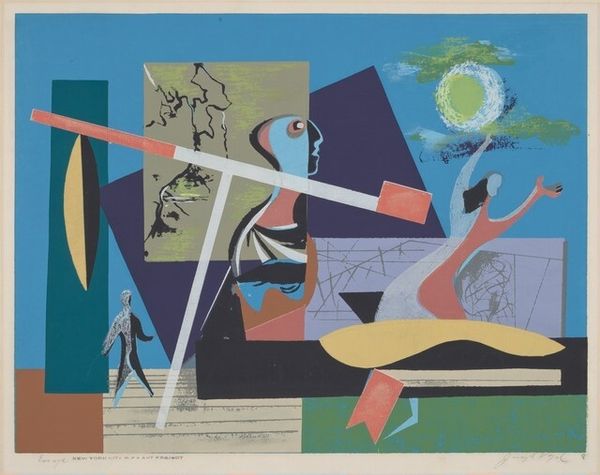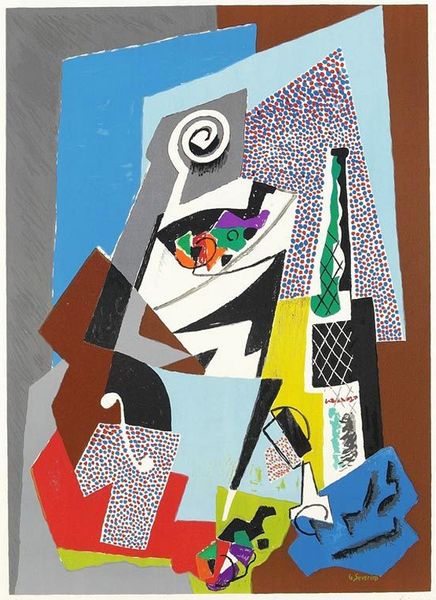
Dimensions: Image: 334 x 481 mm Sheet: 407 x 584 mm
Copyright: National Gallery of Art: CC0 1.0
Curator: Looking at Joseph Vogel’s 1939 print titled "Forward Pass," what strikes you first? Editor: Immediately, the fragmented figures—almost like dissected anatomy—feel quite striking. It reminds me a bit of early Synthetic Cubism. There is something slightly unsettling in its colorful disarray. Curator: Indeed, Vogel’s process of layering and abstraction lends itself to a dynamic feeling of movement despite its stillness as a print. Considering the period, just before the Second World War, can you read the image as being more of social progress and triumph over adversaries? Editor: Certainly, the context is important. Thinking of 1939, you could definitely read it as a symbol of American drive and aspiration during a time of considerable global unrest. But that very specific style—somewhere between sports art and early commercial design—is definitely of its moment. Where was this print typically circulated or displayed? Curator: It's hard to say definitively given our limited records. Its bold color palette suggests possible use as an advertisement. Pop-Art as a term seems more commonly applied now but the artist certainly shows those tendencies through use of geometric shapes, abstraction and recognizable cultural objects. What's interesting is the material choices for commercial print. Editor: Right, looking closely, you begin to realize it's a carefully constructed composition. Not just a quickly dashed off illustration. Someone considered the relationships among the figures in the way that you often see through formal painting and sculpture academies of the 1930's and earlier. Curator: This brings out ideas that extend from sport, through war to design. Mass media becomes more visible at every turn with abstraction allowing artists like Vogel the freedom of exploration. Editor: So, what started as, for me, a somewhat jarring combination of figuration and abstraction actually reveals an optimism tempered with that tension of the pre-war years, brought to us through a carefully and subtly crafted commercial object. Curator: Exactly! It’s an opportunity to understand how both individual experiences and collective aspirations shaped the making and consumption of visual art in the 1930s.
Comments
No comments
Be the first to comment and join the conversation on the ultimate creative platform.
